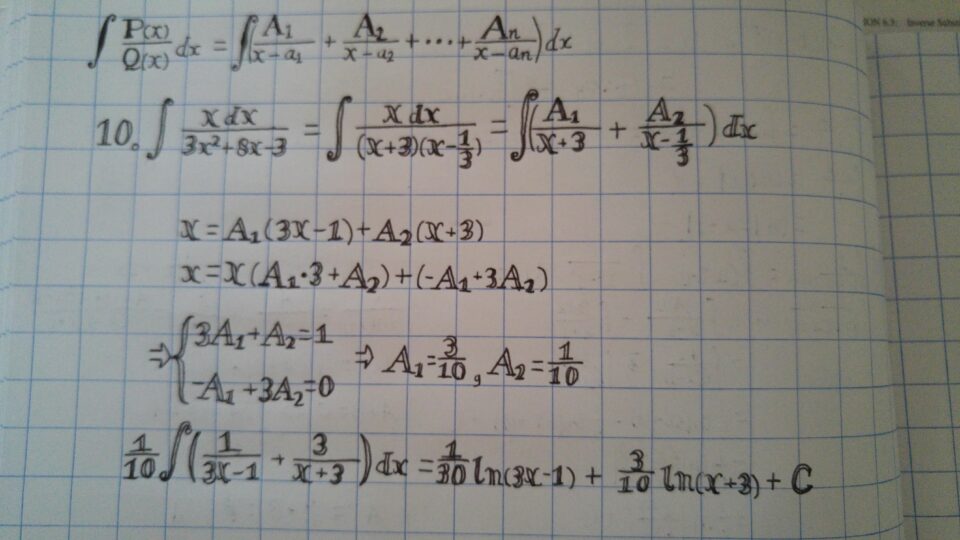Calculus often sends shivers down students’ spines, conjuring images of complex equations and convoluted theories. However, mastering calculus homework can be a manageable challenge. In fact, with the right approach to writing your solutions, you can understand the subject better and impress your professors with clarity and precision. Here are seven writing tips to help you confidently ace your calculus assignments.
1. Start with Clear Definitions

As you define each variable and concept with surgical precision, you’re not just making the problem accessible for yourself; you’re also making it a smooth read for your professor, the seasoned explorer of mathematical landscapes. This clarity is your power move, saying, “I’ve got this.”
But, let’s face it, there are times when deciphering the calculus lexicon feels like decoding an ancient script. That’s where the magic phrase, “calculus homework help,” comes into play. When the road to clarity seems foggy, seeking assistance can illuminate your path, ensuring that your definitions are transparent and that you are your trusted ally in the battle against mathematical ambiguity.
Remember, in calculus, starting with clear explanations is not just a strategy; it’s your compass, and sometimes the best adventurers know when to ask for directions.
2. Step-by-Step Solutions
Calculus problems are often multi-step journeys, and your solution should reflect this. Break down the problem into small, manageable steps, explaining each one as you go. This makes it easier for you to tackle the problem and for your professor to follow your thought process. It’s like providing a roadmap through the mathematical landscape, guiding your reader from point A to the final destination.
For instance, if you’re finding the derivative of a complicated function, outline each step clearly. Start with the basic derivative rules and then move into the specifics of the given process. Show your work step by step, making it easy for anyone to retrace your path and understand how you arrived at your final answer. This meticulous approach showcases your problem-solving skills and ensures that even if you make a mistake, your professor can pinpoint precisely where it occurred.
3. Communicate Using Proper Mathematical Notation

Mathematics has its language, which is crucial for effective communication in calculus. Use proper mathematical notation throughout your solution to convey your thoughts accurately. Be consistent and precise, whether it’s subscript or superscript, parentheses or brackets. Avoid unnecessary symbols that might confuse your reader and stick to the conventions of mathematical writing.
When dealing with integrals, for example, make sure to use the correct integral sign and indicate the limits of integration. If you’re working with summations, use the sigma notation appropriately. Proper mathematical notation enhances your work’s professionalism and ensures no ambiguity in your solution. Remember, your goal is not just to solve the problem but to communicate your solution effectively; using the correct mathematical language is vital.
4. Provide Explanations, Not Just Answers
While getting the correct answer is undoubtedly crucial, explaining how you arrived at that answer is equally important. Your professor isn’t just interested in the destination; they want to understand the journey. Explain the rationale behind each step, the rules you applied, and your decisions. This demonstrates your understanding of the material and allows your professor to provide constructive feedback if there’s an error in your reasoning.
For example, don’t just state the final answer if you’re solving a related rates problem. Walk through setting up the associated rates equation, identify the variables, and explain why you chose a particular formula. This level of detail showcases your analytical skills and helps you internalize the problem-solving process, making it easier for you to tackle similar problems in the future.
5. Be Neat and Organized

A messy solution is not only challenging to read but can also lead to confusion, both for you and your professor. Organize your work neatly, with each step laid out and labeled. Use ample space between lines and around mathematical expressions to avoid overcrowding. Consider using different colors or highlighting to emphasize critical actions or results.
Think of your solution as a well-structured essay with an introduction (clear definitions), body (step-by-step solutions), and conclusion (final answer with explanations). This makes your work visually appealing and helps your professor follow your thought process effortlessly. A neat and organized solution reflects a disciplined problem-solving approach, something your calculus instructor will undoubtedly appreciate.
6. Review and Revise
Once you’ve completed your solution, take a step back and review your work. Look for errors, inconsistencies, or areas where your explanation needs clarification. Put yourself in the shoes of someone reading your solution for the first time and ask whether it makes sense to an outsider. Consider revising your answer to enhance clarity, correct mistakes, and refine your explanations.
This review process is crucial for catching any overlooked errors and ensuring the overall coherence of your solution. It’s a step that can mean the difference between a good and an exceptional assignment. Don’t rush through this phase; take the time to refine your work, and you’ll improve your current assignment and develop a habit of producing high-quality solutions in the future.
7. Seek Feedback and Learn

Lastly, don’t hesitate to seek feedback on your solutions. Whether it’s from your professor, classmates, or online forums, getting input from others can provide valuable insights into different approaches or alternative solutions. Constructive criticism is a powerful improvement tool, and it can help you note blind spots in your understanding or areas where you can enhance your problem-solving skills.
Additionally, use feedback as a learning opportunity. If you made a mistake, understand why it happened and how to avoid it in the future. If there are areas where your explanation could be more straightforward, take note and strive to communicate more effectively in your next assignment. The journey to mastering calculus is a continuous process of learning and refinement, and feedback is a crucial part of that journey.
Conclusion
Mastering calculus homework is not just about solving equations; it’s about effectively communicating your thought process. You can elevate your calculus writing skills by starting with clear definitions, providing step-by-step solutions, using proper mathematical notation, explaining your reasoning, maintaining neatness and organization, reviewing and revising your work, and seeking feedback. Remember, each assignment is an opportunity to showcase your mathematical prowess and refine your ability to communicate complex ideas clearly and precisely.

